Shapouri House | A Must-Visit Landmark in Shiraz
Shiraz, renowned for its poetry and vibrant floral landscapes, has long captivated visitors with its stunning gardens and historical estates. The sight of towering trees intertwined with centuries-old mansions leaves a lasting impression on those who explore this city.
Each garden seems to carry a fragment of Iran’s rich history and culture. Like many other cities in the country, Shiraz boasts numerous tourist and historical sites, with Shapouri House and garden standing as one of its most iconic. Shapouri Mansion is more than just a garden—it represents a period of change and growth in Iran’s history. It serves as a link between tradition and modernity, blending creativity and innovation with cultural preservation. If you're seeking a unique journey through time, this article will guide you through one of Shiraz’s most significant treasures.
History of Shapouri House in Shiraz
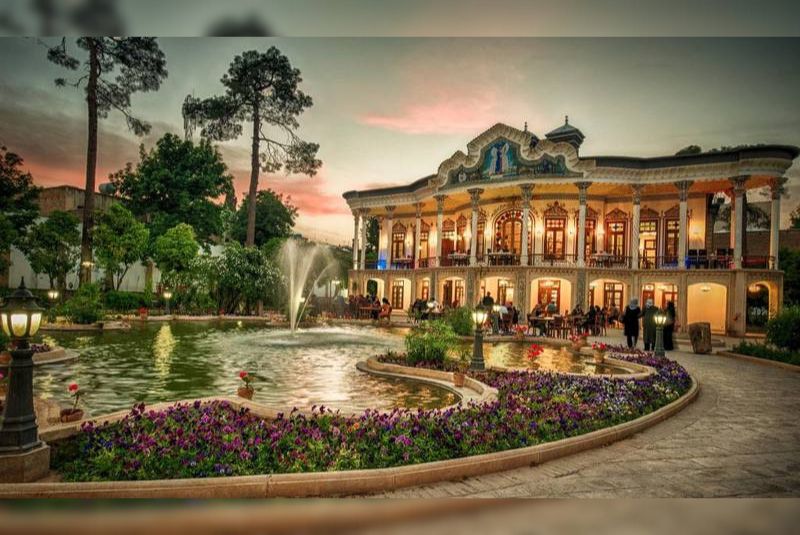
Shapouri Pavilion & Garden in Shiraz, a famous architectural marvel, was once the residence of a prominent local businessman, Abdulsaheb Shapouri. This stunning mansion dates back to the early Pahlavi period and took five years to complete under the expert guidance of Master Abul Qasem, a renowned engineer of the time. The Shapouri family lived in this home until the early 1970s, after which the house was left abandoned. In 1999, the Cultural Heritage Organization of Fars Province acquired the property, and following extensive restoration efforts, it was officially added to Iran's cultural heritage registry.
Shapouri House and Garden Architecture
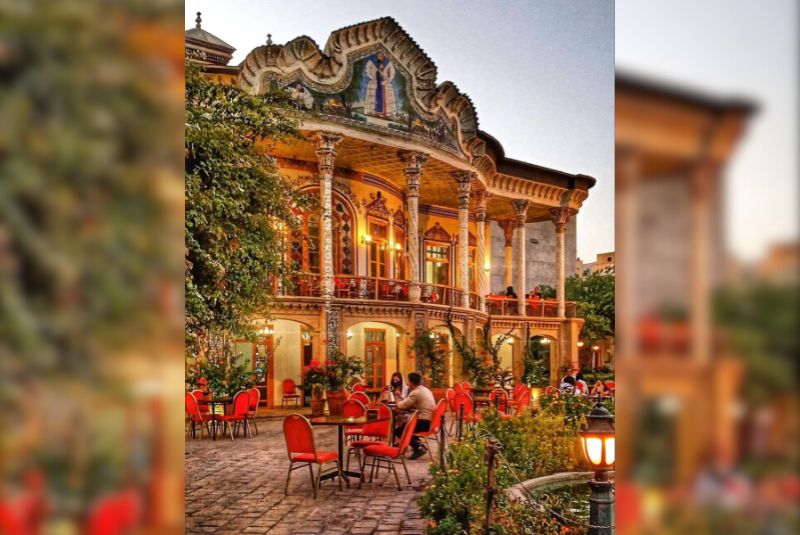
As you step into the garden, a beautifully landscaped space with tall trees leads you to the grand two-story mansion. What immediately draws your attention are the intricate plasterwork, vibrant decorations on the façade, and the solid columns supporting the second-floor balcony.
A closer look reveals that Shapouri Mansion is a perfect example of early Pahlavi and Qajar architecture, reflecting the trends of its era. What distinguishes it from other buildings of the same period is the prominent balcony, a feature influenced by European architecture. The house's large veranda, adorned with 14 finely designed columns and intricate plaster decorations, creates an elegant blend of Qajar elements and European free style. The upper section of the house features beautiful tiles inspired by Achaemenid art, including a detailed depiction of a winged figure in bold colors like blue, yellow, red, and brown.
Entrance and Stairs
To enter the mansion, you approach at a 90-degree angle to the central building's axis. Once inside, your attention is drawn to a grand staircase—a design choice influenced by European architecture, where stairs are often used to connect different parts of the house. This is a contrast to traditional Iranian architecture, where staircases are usually hidden at the margins. The grand staircase directs you to two main sections of the house: the royal area and the earring section.
Floors

Shapouri House consists of two floors, each containing several rooms with flexible uses. During its time, assigning a specific function to each room was a new concept in architecture, but Shapouri Mansion broke away from the norm, emphasizing adaptability and innovation in design.
Balcony
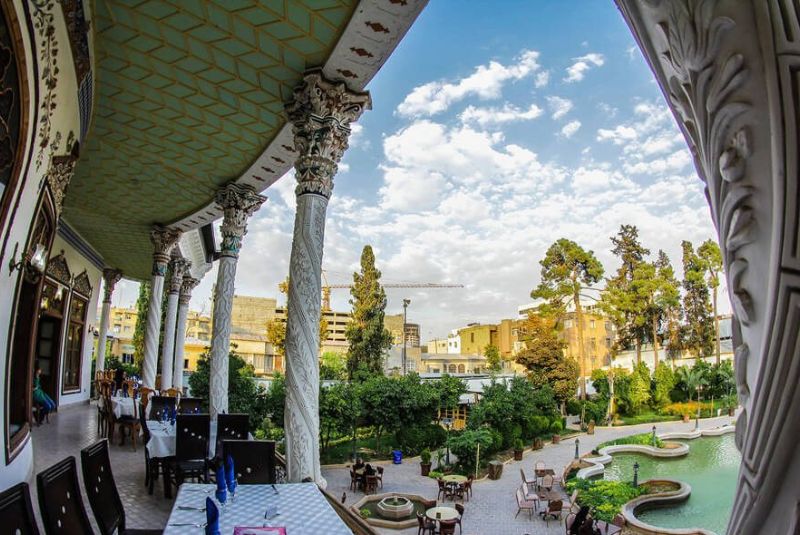
From the second floor, step onto the balcony and take in the breathtaking view of the expansive garden, which covers more than 4,000 square meters. Close your eyes and listen to the soothing sound of water from the fountains in the large pool below. The beauty and tranquility of the garden are amplified by its layout and atmosphere.
Pond
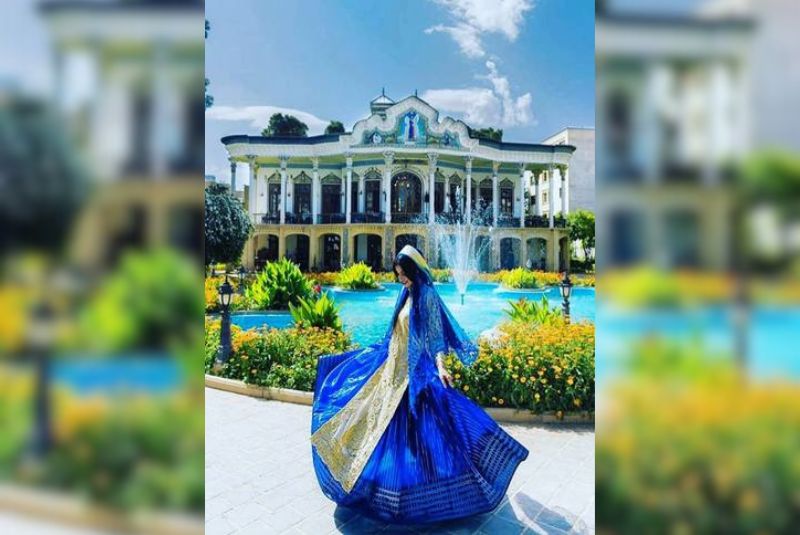
The main pond at the heart of Shapouri Garden is a five-sided structure, offering a distinctive design compared to the rectangular ponds common in traditional Iranian estates. At night, the pond transforms into a mesmerizing focal point, reflecting the surrounding lights. A spiraling pathway encircles the pond, guiding visitors toward the mansion. The edges of the pond are crafted from sandstone, and its interior is painted a deep blue. Potted geraniums and roses surround the pond, adding a vibrant touch to the setting.
Shapouri Mansion Garden
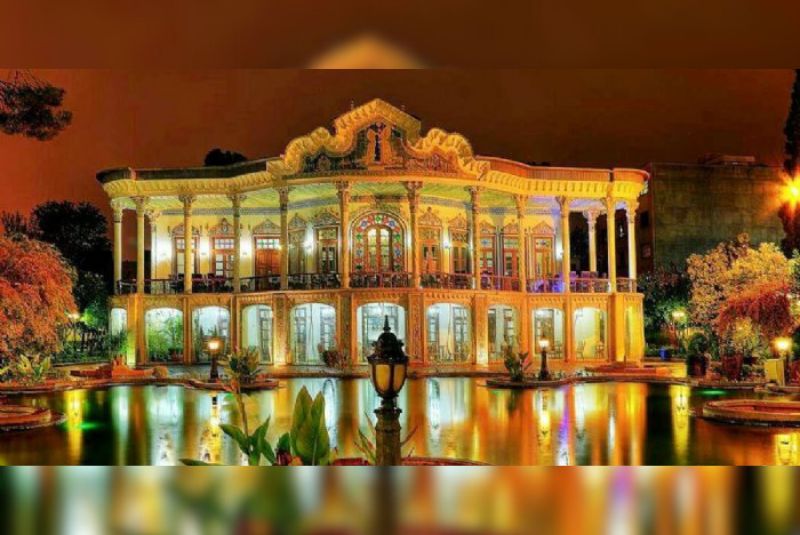
The garden is home to a variety of trees, including cypress, maple, sycamore, fig, pomegranate, orange, and date palms, creating a sense of springtime freshness. Walking along the garden path, you’ll also encounter fragrant roses and colorful geraniums. The garden's design reflects a blend of European and Iranian architectural styles, offering a serene and artistic space. While the layout follows traditional landscaping techniques, the selection and placement of trees on either side of the paths break from the parallelism typical of that era.
Other Parts of the Garden
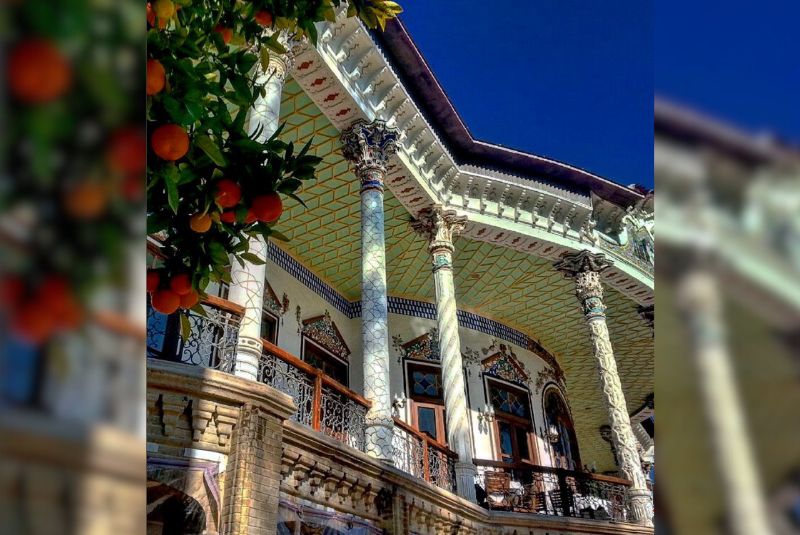
Beyond the main garden and house, the Shapouri garden includes an inner mansion, a courtyard, a carriage house, and an entrance mansion. While the Fars Cultural Heritage Organization now owns part of the property, much of the estate still belongs to the heirs of Abdulsaheb Shapouri.
Notable Artistic Features
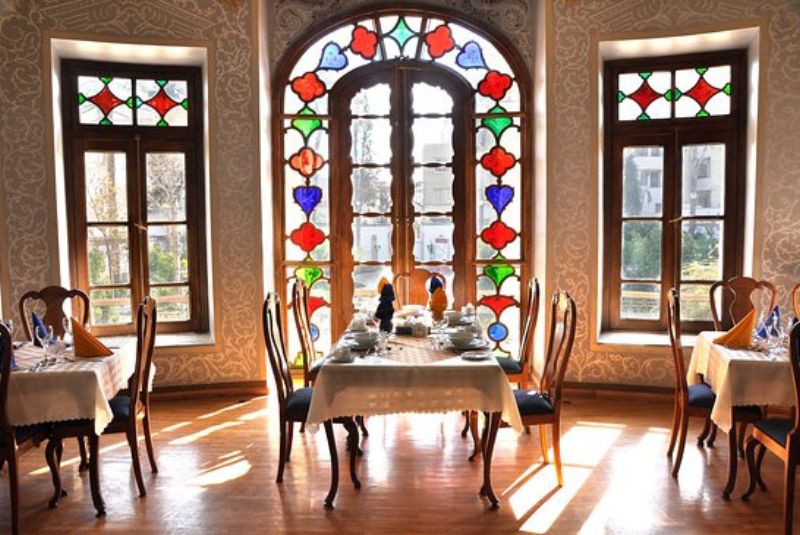
One of the first things you notice is the exceptional plasterwork on the second-floor porch façade. As your eyes explore the details, they are drawn to the beautiful tiling featuring a depiction of the winged figure from Achaemenid art in vivid colors. The intricate seven-colored tiles, along with the detailed stucco columns featuring elaborate bases, shafts, and capitals, offer a true showcase of the period's craftsmanship.
Shiraz Arts and Crafts Exhibition
The architecture of Shapouri House, like many historic Iranian mansions, is a remarkable display of traditional craftsmanship. From the finely carved wooden doors to the painted ceilings and detailed tilework, every element reflects Iran's rich cultural heritage. For those interested in exploring local arts, the mansion also hosts an exhibition of Shirazi and Iranian crafts, offering visitors the opportunity to immerse themselves in the region’s artistic traditions. Additionally, you can capture memorable moments by dressing in traditional Qajar-era clothing for photos.
Shapouri House Restaurant
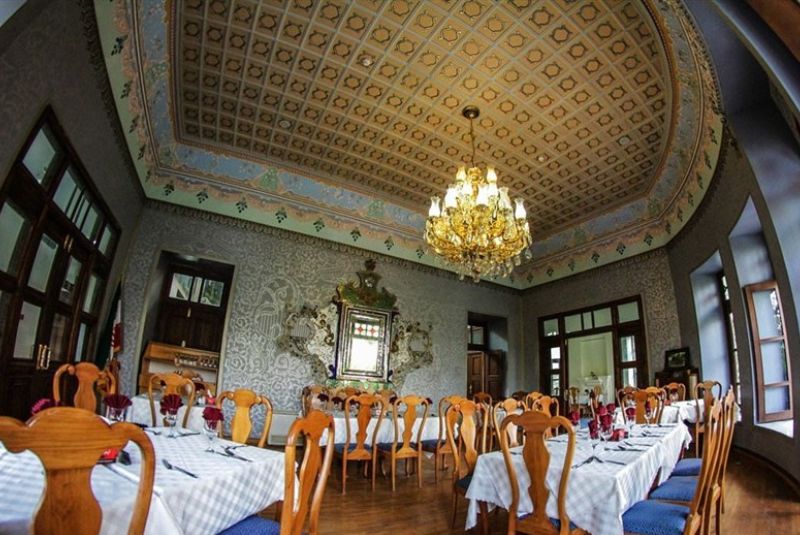
The Shapouri Mansion Coffee Shop and Restaurant provides a cozy and charming atmosphere for visitors seeking to relax in a historic setting. It offers a unique dining experience within the beautiful mansion, serving a range of traditional Iranian and local dishes, including favorites like daisy and kebabs. In the café section, guests can enjoy a variety of refreshing summer drinks, ice cream, and coffee, making it an ideal spot for both a meal and a casual break.
Neraby Attractions
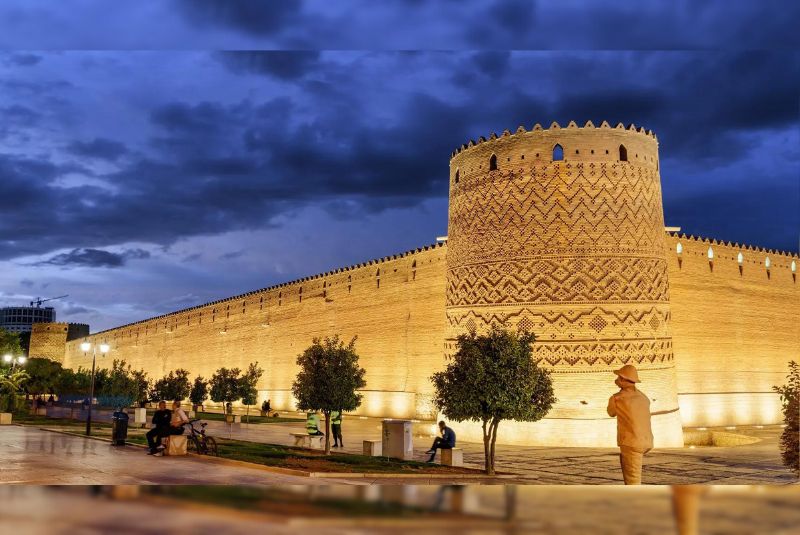
Shapouri Pavilion & Garden in Shiraz is recognized as one of the city's valuable tourist sites. Several noteworthy attractions are situated nearby, offering visitors a rich cultural experience.
Arg of Karim Khan
Located in the center of Shiraz, the Karim Khan Citadel is one of the top tourist attractions in the city. Built during the Zand dynasty, this citadel became known as the Karim Khan Citadel after Karim Khan Zand chose it as his residence. One interesting feature is the eastern tower, which has a noticeable 30-degree tilt, likely caused by past humidity affecting the structure.
Vakil Historical Bath
During his reign between 1172 and 1193 AH, Karim Khan Zand commissioned several structures in Shiraz, including mosques, bazaars, and baths. Vakil Bath, one of these constructions, stands out for its intricate carvings and beautiful design. Covering an area of about 14,000 square meters, it has undergone various restorations, particularly during the Qajar period, which contributed to the building’s current appearance.
Shah Cheragh Holy Shrine
The tomb of Hazrat Shah Cheragh (PBUH), brother of Imam Reza (AS), is a significant religious and cultural landmark in Shiraz. Registered as a national monument in 1321, this shrine is not only revered for its religious significance but also admired for its stunning Islamic and Iranian architectural features, including elaborate mirror work and tiling.
Meshkinfam Historical House
Also known as the Forough-ul-Maluk House, this building dates back to the late Qajar and early Pahlavi periods. It now serves as the Meshkinfam Art Museum, showcasing the artworks of three generations of the Meshkinfam family, along with contributions from other artists in Fars province.
Manteghinejad Historical Mansion
This mansion, a splendid remnant of the Qajar era, is situated near the Shah Cheragh Shrine. Known as the Museum of Islamic Arts and the Museum of Voices, it houses an impressive collection of Iranian fine arts, with stunning mirror work and intricate muqarnas architecture.
Saraye Moshir
Built in 1268 by Mirza Ali Akbar Khan Mushir al-Molk, Saraye Moshir originally served as a residence and was later transformed into a museum by order of Reza Shah Pahlavi in 1305. Visitors can explore this historic site and shop for handicrafts, spices, perfumes, and more in the vibrant Saraye Moshir Bazaar.
Pars Museum
The Pars Museum in Shiraz, located within a beautiful garden, is one of the oldest and most esteemed museums in Iran. It houses a precious collection of historical artifacts and captivates visitors with its Kolah Farangi-style architecture and intricate carvings.
Khan School
Khan School, constructed during the Safavid era under Shah Abbas, was once a center of learning where the famous philosopher Mulla Sadra taught. Today, it stands as a national heritage site, embodying Shiraz's long-standing reputation as a city of knowledge.
Where is the Shapouri Mansion?
Shapouri Mansion is located at Karim Khan Zand Street in Shiraz city of Iran. You can reach this historic site using either public transportation or a private vehicle, making it easily accessible from various parts of Shiraz.
The Best Time to Visit Shapouri House
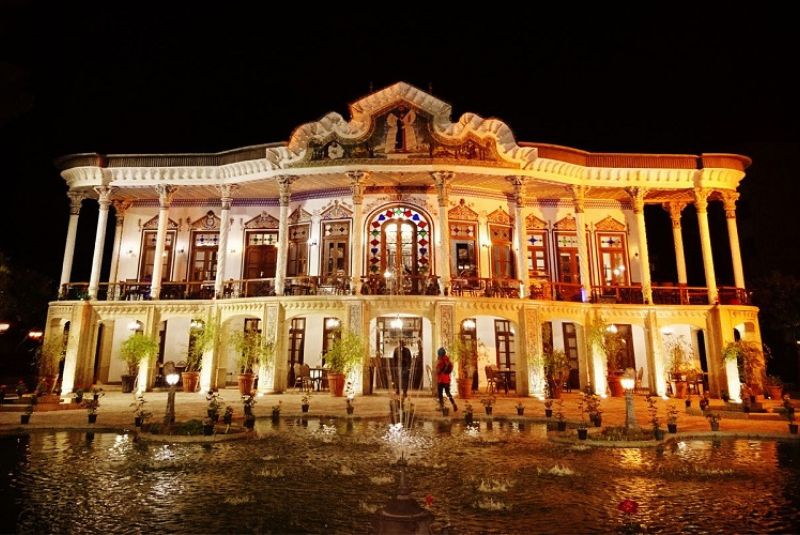
Shiraz enjoys a pleasant climate year-round, but the best time to visit is in May. During this month, the city is adorned with blossoms and springtime greenery, offering a charming atmosphere. However, this also makes it one of the busiest times, with larger crowds of visitors. For a quieter experience, early November is an ideal alternative. The weather remains comfortable, and you can explore the sights without the heavy crowds typical of peak tourist season.
Visiting Hours
Shapouri Mansion is open to visitors every day from 8:00 AM to 11:00 PM. However, it remains closed on official holidays, so be sure to plan your visit accordingly.
Final Takeaway
Shapouri House in Shiraz is more than just a beautiful, historical site. It is a testament to the elegance of Iranian architecture, combining art, culture, and nature. The stunning design of the mansion, set amidst lush green gardens and surrounded by ancient artifacts, offers an unforgettable experience for visitors. Shapouri Mansion continues to attract both domestic and international tourists, leaving them with lasting memories of a place where history, beauty, and craftsmanship come together in harmony.
Share your story!
Comment below and let us know about your Experience.
Your story inspires others!


Comment
Leave a Comment